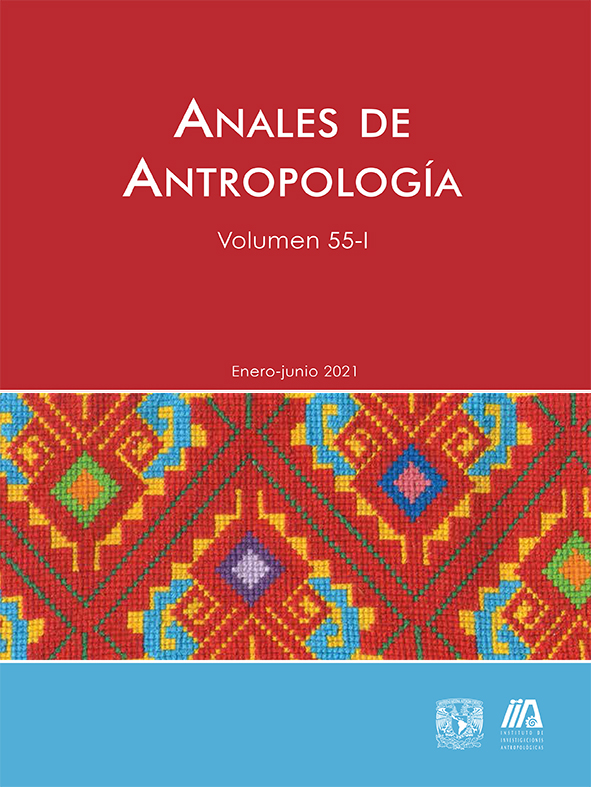“Divine Intruders”. The cult of Tlaloc in Western Mexico
Main Article Content
Abstract
Tlaloc is one of the most emblematic Pan-Mesoamerican deities; however, although his presence in Western Mexico is recognized, the peculiarities of his cult in the region are still not clear. A strong presence of the cult of the aquatic deity has been detected in southern Jalisco and the Chapala basin. The present investigation returns to the subject, analyzing in a general way the archaeological and ethnohistorical evidence available; special emphasis is placed on the spatial distribution of the representations of this deity. It is assumed that the worship of this god was not at all homogeneous in the territories that would later become the states of Jalisco and Colima.
I propose that the arrival of the cult of the God of Rain in the region was late, practically during the Postclassic period (900-1521 AD). The cult of Tláloc in the area associated with the territorial expansion of the Aztatlán Tradition, while the devotion to this deity was effectively absent in areas where local material cultures predominate (e.g. Atemajac and Amacueca Ceramic Complexes). Furthermore, I note how the attributes and iconography of Tláloc were assimilated to other local deities as part of the complex scenario of cultural interaction of the Mesoamerican Postclassic.
Downloads
Article Details
Citas en Dimensions Service
Esta revista usa una licencia CC del tipo CC BY-NC-ND 3.0. Se maneja bajo el esquema de acceso abierto, con una licencia Creative Commons Attribution-NonCommercial-NoDerivs 3.0 Unported.
